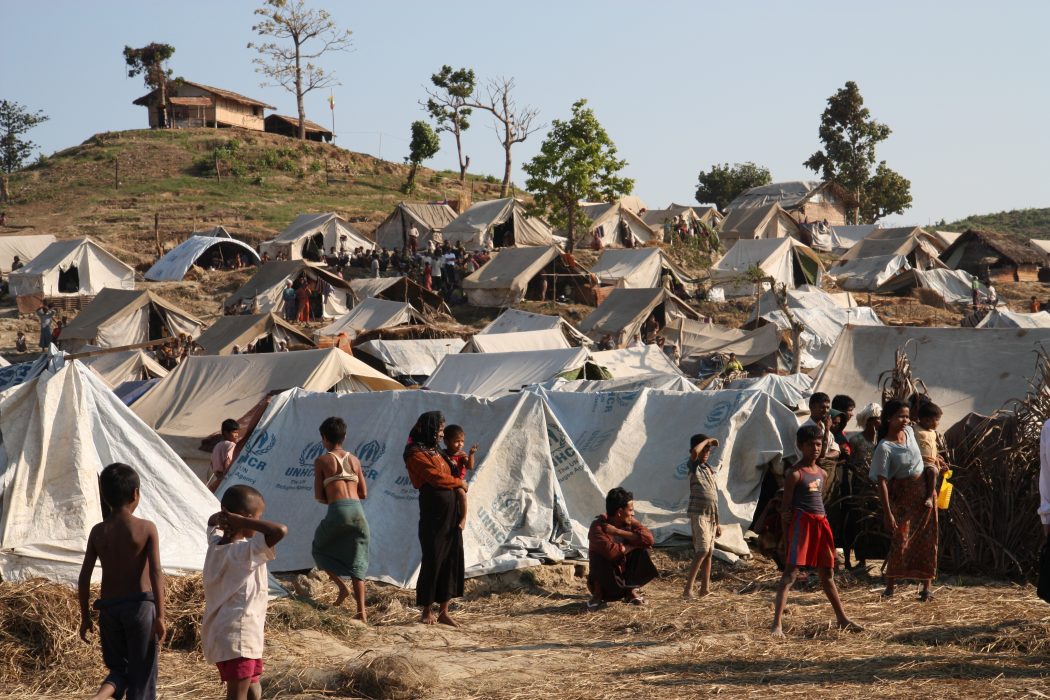An Evaluation of the Riots in Sri Lanka and the Rohingya Genocide
Buddhism has always been presented to the world as the faith of peace. The archetypal image of a Buddhist monk living a zen, monastic life, compassionate to all lifeforms — be it human or insect — resonates in Western minds like a meditation gong. However, because we are so charmed by our own preconceptions of non-violence, we continue to ignore international atrocities committed by Buddhist extremists and hardline monks who pose a major threat to the faith’s traditionally tolerant nature.
On March 4, a series of violent anti-muslim riots erupted in Kandy, Sri Lanka, leaving two dead, many injured, and countless mosques, muslim owned-businesses, and homes vandalized. Bodu Bala Sena (BBS), the fundamentalist Buddhist group who were the instigators of previous anti-Muslim riots back in 2014, are suspected of encouraging the violence, although they deny responsibility. On March 6, Sri Lankan President Maithripala Sirisena declared a State of Emergency.
Ten days later, the state of emergency was revoked. However, if one considers the shades of historical similarity between the recent riots in Sri Lanka and the ongoing persecution of the Muslim Rohingya — by government armed forces and nationalist Buddhists — in Myanmar, it is easy to predict that these recent riots only mark the beginning of Buddhist militarism in Sri Lanka. If the situation in Myanmar can serve as point of reference and comparison, then it is likely that the 9% Muslim minority in Sri Lanka will remain the target of religious violence.
In both Sri Lanka and Myanmar, antagonism was catalysed between Buddhist and Muslim groups during British colonial rule. In Myanmar, the Rohingya sided with the British in WWII whereas the Burmese nationalists allied with the Japanese, ensuring nationwide tension. In Sri Lanka, British colonials empowered Muslim and Christian minority groups, triggering resentment from the Buddhist Sinhalese majority.
if one considers the shades of historical similarity between the recent riots in Sri Lanka and the ongoing persecution of the Muslim Rohingya — by government armed forces and nationalist Buddhists — in Myanmar, it is easy to predict that these recent riots only mark the beginning of Buddhist militarism in Sri Lanka.
Seventy years after colonial invasion, the international community continued to fail the people of Myanmar and Sri Lanka by over-simplifying these conflicts in order to produce more digestible media for the public. Branding the tensions as “holy wars” and ignoring historical ethnic divisions prevents us from being able think critically about the issue.
The fact is, the Sri Lankan Sinhalese view themselves not only as a Buddhist community, but also as an ethnic group who have distinct national rights to their promised land — the Sri Lankan soil. Based on a scripture written by the monk Mahanama in the sixth century CE, the Sinhalese are the chosen people to preserve the Buddha’s teachings and often this scripture is used as justification for religio-ethnic violence by extremists.
Sinhalese claims as the first people to occupy the island have been the foundation of civil strife in Sri Lanka long before Buddhist-Muslim antagonism developed. July 1983 marked the beginning of a 26 year war between the Sinhalese government and insurgent forces, popularly known as the Tamil Tigers, which represented the largest Hindu minority group in Sri Lanka.
The Hindu Tamil Tigers were defeated in 2006, and continuing the crusade of ethnic conservation on the island in their absence, these “Sinhalese-Buddhist supremacists” redirected antagonism toward the Muslim minority in the country, causing riots in 2014, and then again, a month ago.
Sri-Lankan Anthropologist Stanley Tambiah called the self-perception of many extremist sinhalese “a majority with a minority complex.” Although they vastly outnumber the Tamils and the Muslims in the country, there is a distinct feeling of encroachment and pressure to protect their culture, regardless of the fact that they represent a majority of Sri Lankan society.
The Bodu Bala Sena have been consistently spreading propaganda throughout the country, accusing Sri Lankan Muslim communities of deliberately avoiding birth control and practicing polygamy as an effort to increase population growth and make Sri Lanka a Muslim-majority country.
This kind of ethnic protectionist mindset is spurring the conflict in Myanmar as well. In 1982 the Myanmar government passed a law denying the Rohingya ethnic group, among others, citizenship in Myanmar. These stateless individuals were stripped of rights to vote, marry, work, travel, and have access to health care. Ethnic minority groups were also subjected to a two-child policy, in an attempt by the government to reduce population and force migration to Bangladesh.
Thein Nyunt, chairperson of the New National Democracy Party, the ruling party in Myanmar stated, “The citizenship law is intended to protect our race; by not allowing those with mixed blood from making political decisions [for the country].”
The forced exodus of people in Myanmar is not strictly anti-Muslim per se; historically, it is an ethnic prejudice stemming from efforts at racial preservation, rather than competing religious values. The same conflict pattern applies to recent tensions in Sri Lanka.
Acknowledging the shades of similarity between the two countries presents the possibility that similar devastating genocide and exodus in Myanmar is possible in Sri Lanka with the same starting conditions.
Acknowledging the shades of similarity between the two countries presents the possibility that similar devastating genocide and exodus in Myanmar is possible in Sri Lanka with the same starting conditions.
In 2015, the leader of the 969 hardline buddhist group in Myanmar, infamous for his vilifying anti-Muslim sermons, flew to Colombo, Sri Lanka to meet up with the BBS group. Together, they signed an “anti-Islamist” collusion agreement to pool resources in their combined efforts to prevent Buddhists internationally from becoming “victims of conversions.” The promise of support between these two fundamentalist groups undoubtedly emboldened the BBS to take violent action in these recent riots in Sri Lanka.
The international community needs to change their reductionist mindset in two ways in order to prevent being taken by surprise by what could be a new wave of ethnic cleansing. They have to stop dissociating Buddhism with violence in order to better deal with the realities of budding Buddhist extremism. They also have to acknowledge ethnic and socio-historical underpinnings in the conflicts in Myanmar and Sri Lanka, instead of condensing the tension into a simple difference of religious opinion.


